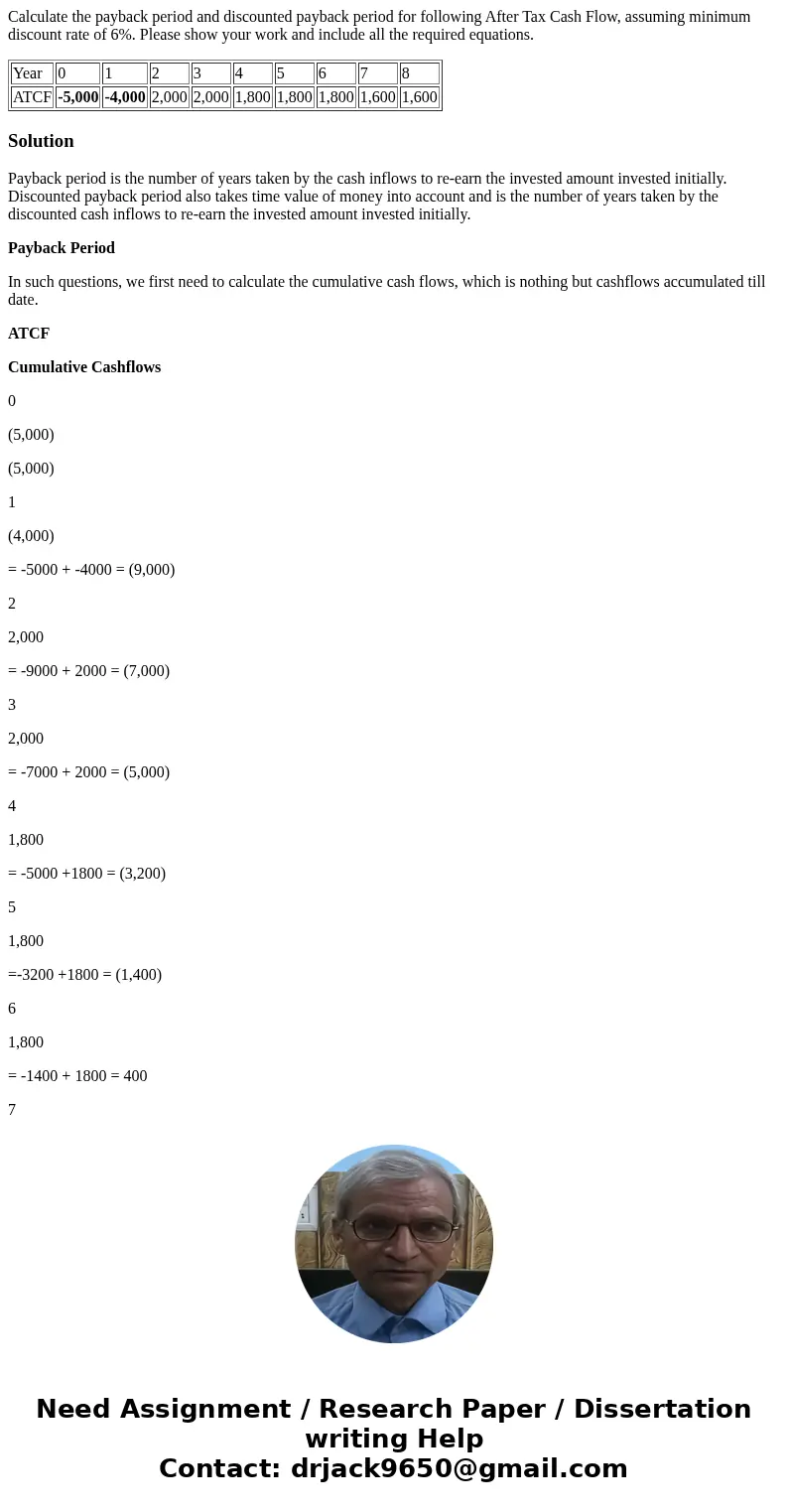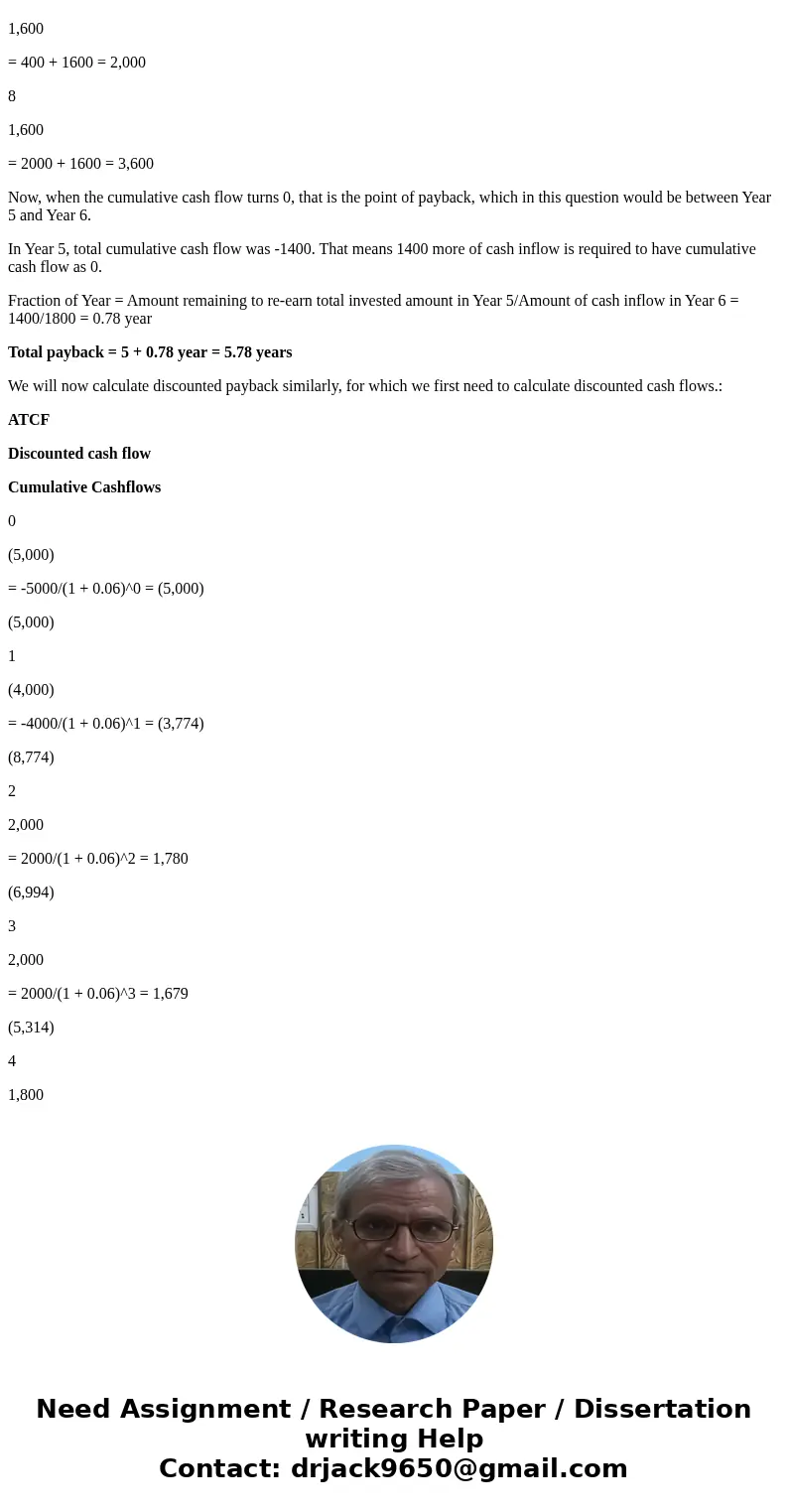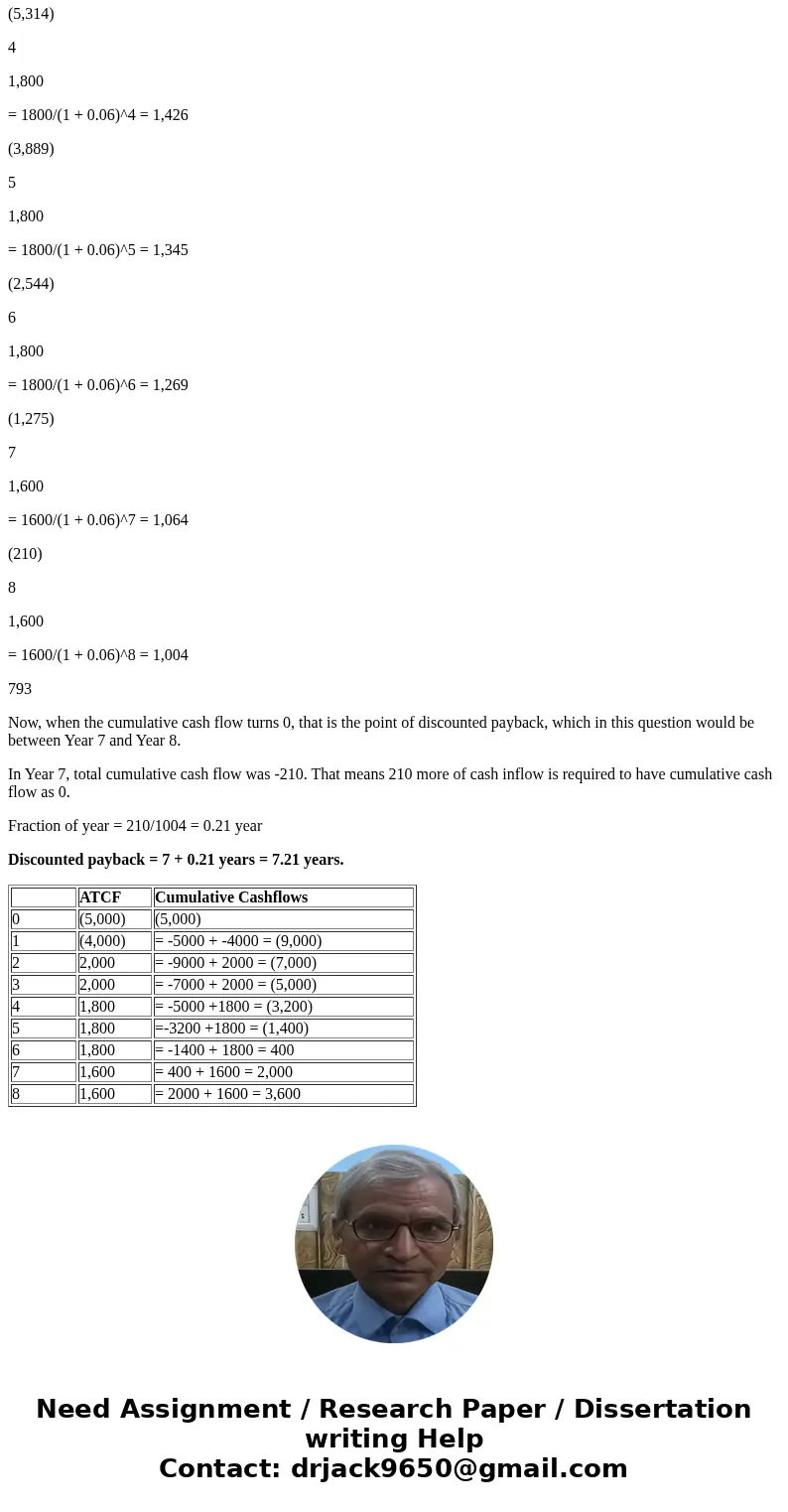Calculate the payback period and discounted payback period f
Calculate the payback period and discounted payback period for following After Tax Cash Flow, assuming minimum discount rate of 6%. Please show your work and include all the required equations.
| Year | 0 | 1 | 2 | 3 | 4 | 5 | 6 | 7 | 8 |
| ATCF | -5,000 | -4,000 | 2,000 | 2,000 | 1,800 | 1,800 | 1,800 | 1,600 | 1,600 |
Solution
Payback period is the number of years taken by the cash inflows to re-earn the invested amount invested initially. Discounted payback period also takes time value of money into account and is the number of years taken by the discounted cash inflows to re-earn the invested amount invested initially.
Payback Period
In such questions, we first need to calculate the cumulative cash flows, which is nothing but cashflows accumulated till date.
ATCF
Cumulative Cashflows
0
(5,000)
(5,000)
1
(4,000)
= -5000 + -4000 = (9,000)
2
2,000
= -9000 + 2000 = (7,000)
3
2,000
= -7000 + 2000 = (5,000)
4
1,800
= -5000 +1800 = (3,200)
5
1,800
=-3200 +1800 = (1,400)
6
1,800
= -1400 + 1800 = 400
7
1,600
= 400 + 1600 = 2,000
8
1,600
= 2000 + 1600 = 3,600
Now, when the cumulative cash flow turns 0, that is the point of payback, which in this question would be between Year 5 and Year 6.
In Year 5, total cumulative cash flow was -1400. That means 1400 more of cash inflow is required to have cumulative cash flow as 0.
Fraction of Year = Amount remaining to re-earn total invested amount in Year 5/Amount of cash inflow in Year 6 = 1400/1800 = 0.78 year
Total payback = 5 + 0.78 year = 5.78 years
We will now calculate discounted payback similarly, for which we first need to calculate discounted cash flows.:
ATCF
Discounted cash flow
Cumulative Cashflows
0
(5,000)
= -5000/(1 + 0.06)^0 = (5,000)
(5,000)
1
(4,000)
= -4000/(1 + 0.06)^1 = (3,774)
(8,774)
2
2,000
= 2000/(1 + 0.06)^2 = 1,780
(6,994)
3
2,000
= 2000/(1 + 0.06)^3 = 1,679
(5,314)
4
1,800
= 1800/(1 + 0.06)^4 = 1,426
(3,889)
5
1,800
= 1800/(1 + 0.06)^5 = 1,345
(2,544)
6
1,800
= 1800/(1 + 0.06)^6 = 1,269
(1,275)
7
1,600
= 1600/(1 + 0.06)^7 = 1,064
(210)
8
1,600
= 1600/(1 + 0.06)^8 = 1,004
793
Now, when the cumulative cash flow turns 0, that is the point of discounted payback, which in this question would be between Year 7 and Year 8.
In Year 7, total cumulative cash flow was -210. That means 210 more of cash inflow is required to have cumulative cash flow as 0.
Fraction of year = 210/1004 = 0.21 year
Discounted payback = 7 + 0.21 years = 7.21 years.
| ATCF | Cumulative Cashflows | |
| 0 | (5,000) | (5,000) |
| 1 | (4,000) | = -5000 + -4000 = (9,000) |
| 2 | 2,000 | = -9000 + 2000 = (7,000) |
| 3 | 2,000 | = -7000 + 2000 = (5,000) |
| 4 | 1,800 | = -5000 +1800 = (3,200) |
| 5 | 1,800 | =-3200 +1800 = (1,400) |
| 6 | 1,800 | = -1400 + 1800 = 400 |
| 7 | 1,600 | = 400 + 1600 = 2,000 |
| 8 | 1,600 | = 2000 + 1600 = 3,600 |



 Homework Sourse
Homework Sourse